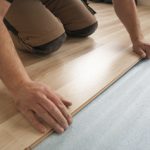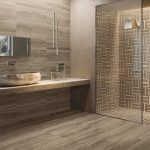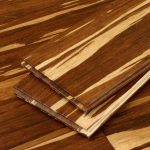QUESTIONS? WE HAVE THE ANSWERS!
Here are the answers to frequently asked questions.
PRODUCT INFORMATION
The difference between grades is the number of allowed character traits. Par exemple, une variation de la couleur plus marquée entre les lamelles, la présence de petits nœuds et de stries de minéraux seront plus notables dans un grade Rustique qu’un grade Sélect. It’s up to you to choose which best suits your project!
Many people believe that if they buy a Select grade, they are getting a higher-quality product. However, quality actually stems from the production method, while grade is related to the product colour. A Select grade allows little variation in colour and almost no knots, while a Rustic grade offers much more nuance and slight imperfections to create a more vintage-like aspect.
One is not better than the other. Each has unique properties that determine its use. Solid wood flooring is ¾ in. thick, so can be sanded several times. In most cases, wood is used in homes where the flooring can be nailed to a wooden subfloor.
Engineered flooring is recommended when the flooring is to be glued down. Because of its ¼ in. thickness and installation method, engineered flooring is regularly used in multi-storey buildings (e.g. condos) or basements. Engineered wood flooring is very versatile and considered more stable than solid hardwood flooring. Despite its stability, however, it is very important to control humidity in the ambient air.
The Select and Best grades offer the greatest colour uniformity. However, wood is a living material and, even if you purchase the highest-standard product, there will be variations on certain boards, regardless of the wood’s grade, species or colour. Most experienced installers will work with several boxes at a time to ensure variations are spread out over the room and therefore blend in.
INSTALLATION
You have two options:
Engineered flooring can now be installed over concrete thanks to new types of wood flooring. Wood floors retain their beauty for many years when installed correctly.
A second option is hardwood boards, which can be installed over a concrete slab. Since the ¾ in. thick boards cannot be glued together and must be nailed down, a wood subfloor (plywood or OSB panels) must be installed first.
No, however, you can install engineered flooring this way.
No, particleboard does not work well for attaching flooring. Plywood or OSB panels are recommended for this type of application. If your subfloor is particleboard, we recommended that you first cover it with plywood at least 5/8 in. thick.
Installing hardwood over vinyl is not recommended. For best results, hardwood flooring should be installed over a clean, flat, solid subfloor that meets manufacturer recommendations.
No. Though it slows moisture migration between the subfloor and the boards, it is not an effective vapour barrier. You must use a true vapour barrier.
Absolutely! Keep your wood flooring indoors at the recommended temperature and humidity level for at least 24 hours before installing. Les planchers d’ingénierie n’ont pas besoin de temps d’adaptation.
We do not recommend installing the boards parallel to the joists, since the movement of the joists will cause gaps between the boards. If it is impossible to install the boards perpendicular to the joists, add a layer of plywood over the existing subfloor, taking care to offset the joints of the two panels, so they don’t overlap.
Use either the cleaner recommended by the glue manufacturer or mineral spirits, acetone or lighter fluid, which you apply with a clean white cloth. Always use these products carefully and test them on a hidden surface to make sure they do not damage the floor.
MAINTENANCE
To keep your floor at its best for many years to come, it is key to take care of it and control the ambient temperature and relative humidity. These maintenance instructions must be applied for your warranty to remain valid. Normal maintenance of a pre-varnished floor is quick and easy. Use a specific product for varnished wood floors. Spray this cleaner over a section of the floor and rub lengthwise along the boards. It is strongly recommended not to use wax, household detergent or oil-based soap on your floor. You should also avoid cleaning prefinished floors with water and vinegar or with a steam machine. All these products can damage your floor and void your warranty.
No! Keep exposure to water at a minimum. Wood fibres swell when they absorb water, which can damage the wood and the finish of your floor. When water seeps into the floor, it can change the board size, discolour the wood and promote mould and mildew growth between the boards. Since flooring in the kitchen and the entrance is likely to come into contact with water, you need to pay special attention to the wood floors in these areas.
No. It is preferable not to wax your floor. Wax can damage the finish and leave a greasy film on the surface.
Generally, the answer is hardwood, but even then, resistance to accidents is not foolproof. However, some kinds of hardwood are definitely more resistant. To get an idea, take a look at the Janka Hardness Scale for different types of woods.
PROBLEMS
Bien qu’il s’agisse de bois franc, leur résistance aux accidents n’est pas a toute épreuve, mais certains le sont définitivement plus. Pour en avoir un indice vous référer a l’échelle de dureté relative des bois.
Yes. Several species of exotic wood will oxidize and take on the richness of their species. It is very important to check with your flooring adviser if the colour sample used is already mature (oxidation period of about 6 to 12 months for most species).
Yellowing or discolouration of the wood is natural. The wood itself changes colour as it ages and sunlight will affect the colour of your hardwood floor. Although today’s finishes protect against yellowing, the floor will age and a varying degree of colour changes will appear depending on the species. To minimize this effect, occasionally move your furniture and carpets to even out the colour variations.
Swelling or buckling is due to variation in the humidity of the boards. This is not related to the product, but to the conditions it is exposed to. Wood is alive and adapts to surrounding conditions.
Too much humidity in the subfloor or basement: The underside of the board absorbs more moisture than the top, resulting in uneven swelling between the top and bottom, causing the board to buckle.
Water on the floor: Water can seep between the boards and be absorbed into the underside of the flooring. This results in swelling of the underside of the slat, causing the board to buckle.
Relative humidity is too high: During humid periods, the wood absorbs moisture from the ambient air and expands. Since the pieces are fastened to the floor, they cannot deform freely and so push against each other, causing deformation (buckling). A faulty expansion joint can accentuate this phenomenon.
The key is maintaining an indoor relative humidity of 45% at all times.
Hardwood floors can creak or make cracking sounds for several reasons:
Relative humidity: Make sure that the humidity level in your home is neither too high nor too low, which could explain why your floor is sagging and making noise. Keep humidity between 37% and 45%.
For nailed installation, the subfloor must be made of plywood or OSB of the correct thickness. Particleboard is not suitable.
The recommended thickness for plywood or OSB panels is ¾ in. for joists spaced 19 in. and less. Below this or for longer spans, deflection can cause creaking.
The boards were installed in the same direction as the joists.
The subfloor is not securely fastened to the joists with flooring screws or there is space between the subfloor and the joists.
If the boards do not have enough fasteners, they can move and cause creaking. Each board must have at least two nails 2 in. from the ends, ideally spaced 8 in. apart depending on the length of the board.
The appearance of gaps between the boards is due to a variation in their internal humidity. This is not related to a product default, but to the conditions it is exposed to.
Boards are too damp before installation: The floorboards were installed with a high level of internal humidity. This increase in humidity can be caused by several factors, such as storing the boards in a humid environment (on damp concrete, wet subfloor, fresh paint, etc.), transporting the boards in the rain at the time of delivery, etc. The wood has absorbed moisture, causing it to swell before installation. Once the floor is installed and the surrounding conditions return to normal, the wood loses the excess moisture and, as a result, shrinks, leaving a visible space between the boards.
Relative humidity is too low: When the air humidity level is too low, the boards will lose moisture and shrink. This situation is common in winter and the boards return to their shape in spring, in most cases.
COMMENTS?
Plancher Sélect is here for you. If you have any suggestions or comments to improve the quality of our services, please let us know by clicking on the link below.



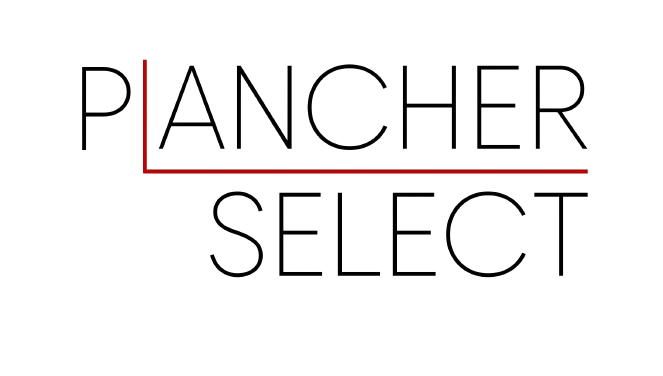
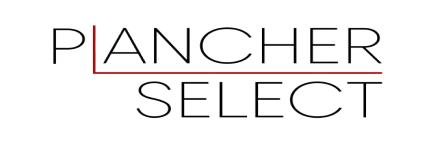 We have the largest selection of ceramic tile and ceramic flooring, engineered wood, hardwood and floating floors, decorative stone and even commercial-grade products.
We have the largest selection of ceramic tile and ceramic flooring, engineered wood, hardwood and floating floors, decorative stone and even commercial-grade products.